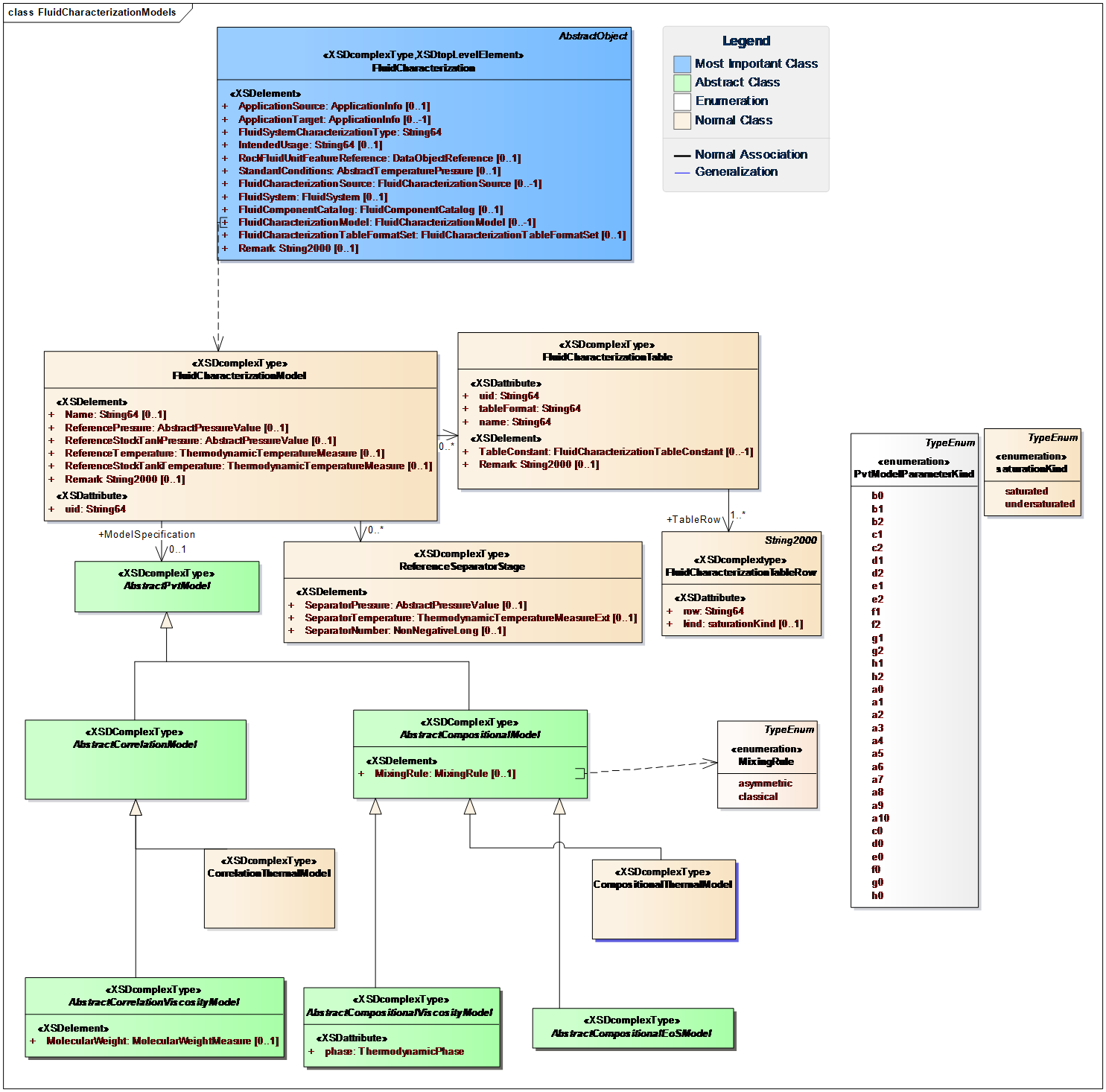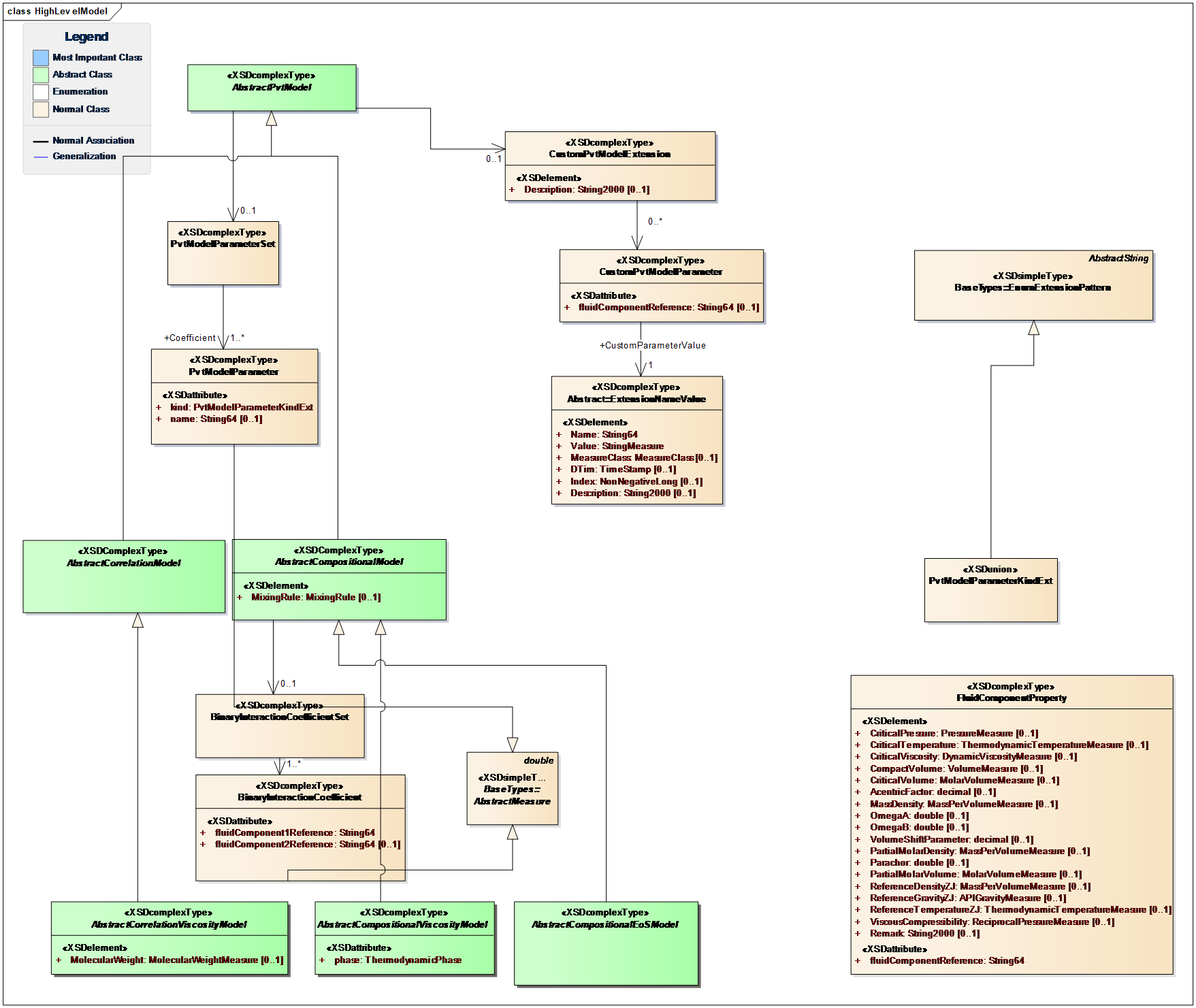10.6.1 Model-Parametric Output
| Topic Version | 1 | Published | 12/09/2016 | |
| For Standard | PRODML v2.0 | |||
In the model-parametric approach, parameters of a named EoS model determined during the characterization effort are provided to an application using the same model formulation. Typical information found in a parametric format includes:
- Identification and parameters of EoS models.
- Characteristics of each component used in characterization, such as critical properties, acentric factor, etc.
- Identification and parameters of viscosity models.
- Parameters of equations to represent thermal properties of components.
- Mixing parameters for density and viscosity models.
The models are arranged in a hierarchy, with the top level being compositional (i.e., with a set of fluid components each having fluid component properties), or correlation (i.e., a set of parameters and a model which fits the behavior of the whole fluid) (Figure 10.6.1-1). A fluid characterization model can have a model specification, and the specification is abstract down to the level of a known model which then has its required parameters (see below for more details).
Correlation models are currently all viscosity models and are divided into dead oil, bubble point, under-saturated oil and gas viscosity correlations.
Compositional models are available as EoS (phase behavior) and viscosity models.

Figure 10.6.1-2 shows more details of the models. All models (correlation and compositional) can have model-wide PVT model parameters. All models (correlation and compositional) can also have custom extensions, allowing extra parameters which specialist studies may have defined, to be added. Compositional models also can have a range of fluid component properties defined per fluid component, and a set of binary interaction coefficients, each relating one fluid component to another.

For a list of the specific models (which are concrete classes that may be instantiated in the XML data transfer), see 12.2 PVT Models . The schema is designed so that each model inherits its correct parameter set, and as noted above, custom parameters for extended models can be added.